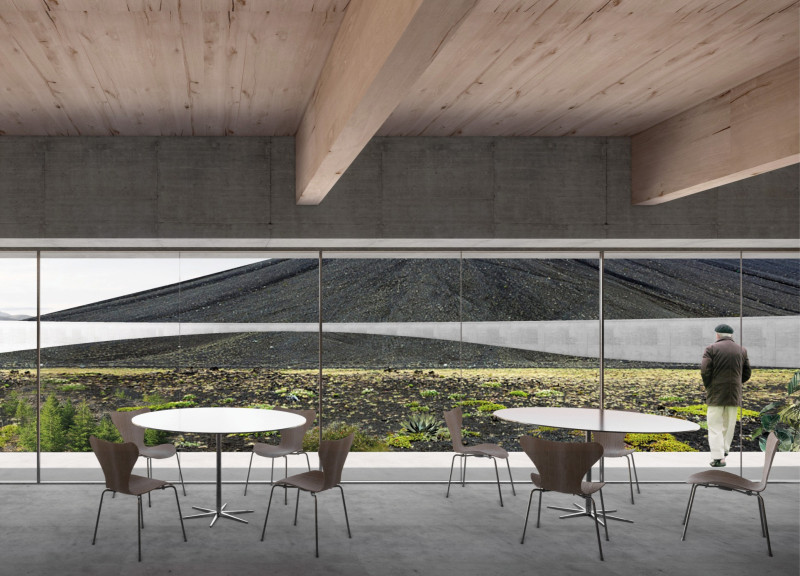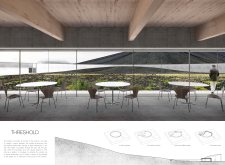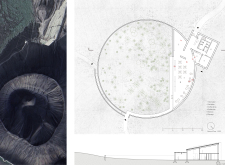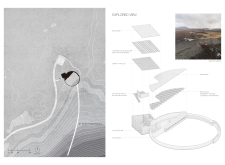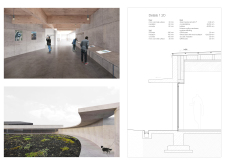5 key facts about this project
Architecturally, the design embodies a circular form, which facilitates movement and encourages a fluid flow between various spaces. This layout is significant in not only drawing visitors into the structure but also in heightening their awareness of the stunning views offered by the volcano and its landscape. The circularity of the design expresses wholeness and unity, inviting community interaction and offering an inclusive space for various activities. By positioning common and functional areas efficiently, such as exhibition spaces and the café, the design fosters social engagement while maintaining a focus on the natural backdrop.
Materiality plays an essential role in the project’s success. A careful selection of materials enhances the structural integrity while harmonizing with the environment. The primary use of concrete provides durability and strength, defining the building’s foundation. The incorporation of cross-laminated timber (CLT) adds warmth and a tactile quality to the interiors, contributing to a comfortable atmosphere that stands in contrast to the harshness of the volcanic terrain. Sheet metal is used aesthetically in certain roofing elements, establishing a modern touch that is both visually appealing and functional, ensuring protection against the elements. Additionally, insulation materials integrated within the structure contribute to energy efficiency and comfort, strategically enhancing thermal and acoustic performance.
Large glass panels are a notable feature of the design, allowing natural light to pervade the interiors while affording unrestricted views of the breathtaking landscape. This feature blurs the boundaries between inside and outside, fostering a sense of connection with the environment. Visitors can interact with the changing light throughout the day, which further enhances their experience within the space. Such design considerations amplify the project’s essence of creating a threshold where the built space and its natural context are in dialogue.
"Threshold" represents an innovative approach to architectural design that prioritizes ecological integration and community engagement. The project reflects a commitment to not only providing functional amenities but also educating visitors about the local geological context. The garden café functions as a space for learning, where both locals and tourists can connect with the natural world while enjoying carefully curated experiences that celebrate the region's unique cultural and natural landscapes.
Unique to this project's approach is the emphasis on incorporating native plant species into the surrounding landscape, promoting biodiversity and ecological awareness. The landscape design serves as an extension of the café, creating an inviting garden that enhances the overall visitor experience and introduces guests to the beauty of the local flora.
As one observes the elements of "Threshold," it becomes evident that the project thoughtfully blends architecture and nature, enhancing the connection between them. The design encourages visitors to appreciate the beauty of the landscape while providing a functional, welcoming space that meets their needs. By focusing on the interaction between human activities and the remarkable geological formations, this project stands as a testament to the elegant interplay of architecture and the natural world.
For those interested in exploring this architectural project further, reviewing the architectural plans, sections, and designs will provide a deeper understanding of the innovative ideas and functional aspects that make "Threshold" a noteworthy endeavor in contemporary architecture.


